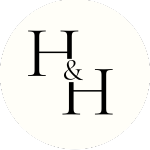Written by Stephanie, Co- Founder Herb & Hive

Honey is one of nature’s most ancient superfoods, packed with antioxidants, enzymes, and natural sweetness. But not all honey is created equal—and unfortunately, the global honey market is flooded with fake, diluted, and adulterated products that lack the health benefits of real raw honey. Some of the additives and ways that honey is shipped on a global scale, adds health risk over reward at prices that out-compete small farm hives with higher quality standards and thus better product.
So how can you tell if your honey is pure or fake? In this guide, we’ll break down:
✔ What adulterated honey is.
✔ How to spot fake honey in stores.
✔ The best ways to test honey purity at home.
✔ Why raw, unfiltered honey is the best choice.
What Is Adulterated or Fake Honey?
Fake honey is honey that has been altered with additives, such as:
❌ High-fructose corn syrup or sugar syrup to increase volume.
❌ Water or starches to dilute the honey.
❌ Artificial sweeteners to mimic the taste of real honey.
❌ Preservatives & colorants to enhance appearance.
These low-quality alternatives may look like honey but lack the beneficial enzymes, antioxidants, and antibacterial properties of real, raw honey. Real honey dosen’t need preservatives and if stored correctly and can actually last hundreds of years with a recent discoveries of several thousand year old stored honey.
How to Spot Fake Honey in Stores
Many commercial honey brands sell pasteurized, ultra-filtered, or adulterated honey. Here’s how to identify it:
1. Check the Ingredients Label
✅ Pure honey should only have ONE ingredient: Honey.
❌ If you see glucose, fructose syrup, high-fructose corn syrup (HFCS), or added sugars, it’s not real honey.
2. Look for “Raw” and “Unfiltered” on the Label
- “Raw” honey means it’s unpasteurized and retains natural nutrients.
- “Unfiltered” honey contains pollen, which is essential for authenticity.
Did You Know?
Many store-bought honeys labeled “pure” still undergo ultrafiltration to remove pollen traces, making it difficult to trace their origins. Some honey is shipped from place to place being combined with other honey from different countries and sold on mass scale, making quality tracking nearly impossible when the cargo ships finally land.
3. Avoid “Cheap” Honey
If the price seems too good to be true, it probably is. Pure, raw honey takes significant time and effort to produce. If it’s suspiciously cheap, it may be diluted with syrups or mass-produced using unethical practices. Shopping small and local when possible is best!
4. Look for a Crystallization Pattern
Raw honey naturally crystallizes over time.
✔ If the honey is slightly grainy or forms sugar-like crystals, it’s likely raw & pure.
❌ If it stays perfectly clear and runny for months or years, it has likely been heated and filtered, stripping away nutrients.

5 Simple At-Home Tests to Check Honey Purity
If you already have honey at home and want to test its authenticity, try these:
1. The Water Test
- Fill a glass with water and drop a spoonful of honey into it.
- Pure honey will settle at the bottom without dissolving.
- Fake honey will dissolve quickly or spread through the water.
2. The Thumb Test
- Place a small drop of honey on your thumb.
- If it stays intact, it’s real.
- If it spreads or runs off quickly, it likely contains water or additives.
3. The Flame Test
- Dip a cotton wick or matchstick into the honey.
- Try lighting it with a flame.
- Pure honey will burn because it has low moisture content.
- Fake honey won’t ignite due to excess water content.
4. The Paper Towel Test
- Place a drop of honey on a paper towel.
- If it absorbs quickly, it contains added water.
- If it remains intact, it’s pure.
5. The Vinegar Test
- Mix a tablespoon of honey with a little vinegar and water.
- If it starts to foam or bubble, it may be adulterated with chalk powder or other additives.
Why Raw, Unfiltered Honey Is the Best Choice
✅ Rich in antioxidants – Supports immunity & fights inflammation.
✅ Contains natural enzymes – Helps with digestion & gut health.
✅ Retains bee pollen – Provides vitamins, minerals & allergy relief.
✅ Natural antibacterial properties – Great for wound healing & skincare.
When honey is pasteurized or ultra-filtered, these benefits are destroyed or removed.
How to Ensure You’re Buying Real, High-Quality Honey
- Buy from small-scale, ethical beekeepers who prioritize bee health.
- Look for raw, unfiltered honey—the closest thing to what bees make.
- Support local beekeeping by purchasing from farmer’s markets or trusted sources.
- Avoid mass-produced, commercial brands that undergo excessive processing.
By choosing pure, raw honey, you’re not only getting the best quality honey but also supporting sustainable beekeeping and helping to save the bees!
📌 Final Thoughts: Real Honey vs. Fake Honey
With so much fake honey on the market, it’s important to know what to look for and how to test for purity.
✅ Real honey is raw, unfiltered, and rich in nutrients.
❌ Fake honey is processed, diluted, and often mixed with syrups.
Next time you shop for honey, choose wisely—your health (and the bees) will thank you!
